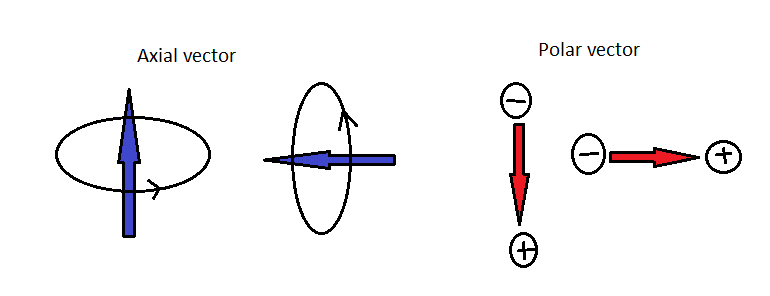Question
Question: The direction of an axial vector depends on: A) The magnitude of the vector B) The direction of ...
The direction of an axial vector depends on:
A) The magnitude of the vector
B) The direction of rotation
C) The axis of rotation
D) The speed of rotation
Solution
Axial vector is a vector which transforms under rotation. But it gains an additional sign flip when in three dimensions. The axial vector is the product of two polar coordinates.
Complete step by step answer:
(i)Axial vectors are those vectors that do not change its sign under rotation. But in three-dimension, it gains an extra sign flip.

(ii) Axial vectors are the product of two polar vectors. Polar vectors are the vectors that change their sign while its direction changed. These axial vectors are called as pseudo vectors. Because it acts as a normal vector while in rotation but in three-dimension it gains an extra sign flip.
(iii)Angular momentum is an axial vector. Angular momentum, L=r×p where r is the position vector and p is a momentum vector.
(iv) From the given points, we can say that the axial-vector direction depends on the direction of rotation.
Hence the correct option is option (B).
Additional information:
(i)We can understand the direction of the axial vectors based on the right-hand thumb rule. The right-hand thumb rule states the direction of the magnetic force in the presence of wire through the wire.
(ii) Right-hand thumb rule states that when the right-hand thumb represents the direction of current then the curled fingers in the right hand represent the direction of the magnetic force.
Note:
The polar vector’s direction depends on the direction of motion of a body whereas the direction of axial-vector depends on the direction of rotation of a body. Examples of axial vectors are angular acceleration, torque, angular momentum, angular velocity, etc. The axial vectors change its direction according to the rotation of the body. But the parallel vectors change its direction according to the signs of the quantity.
